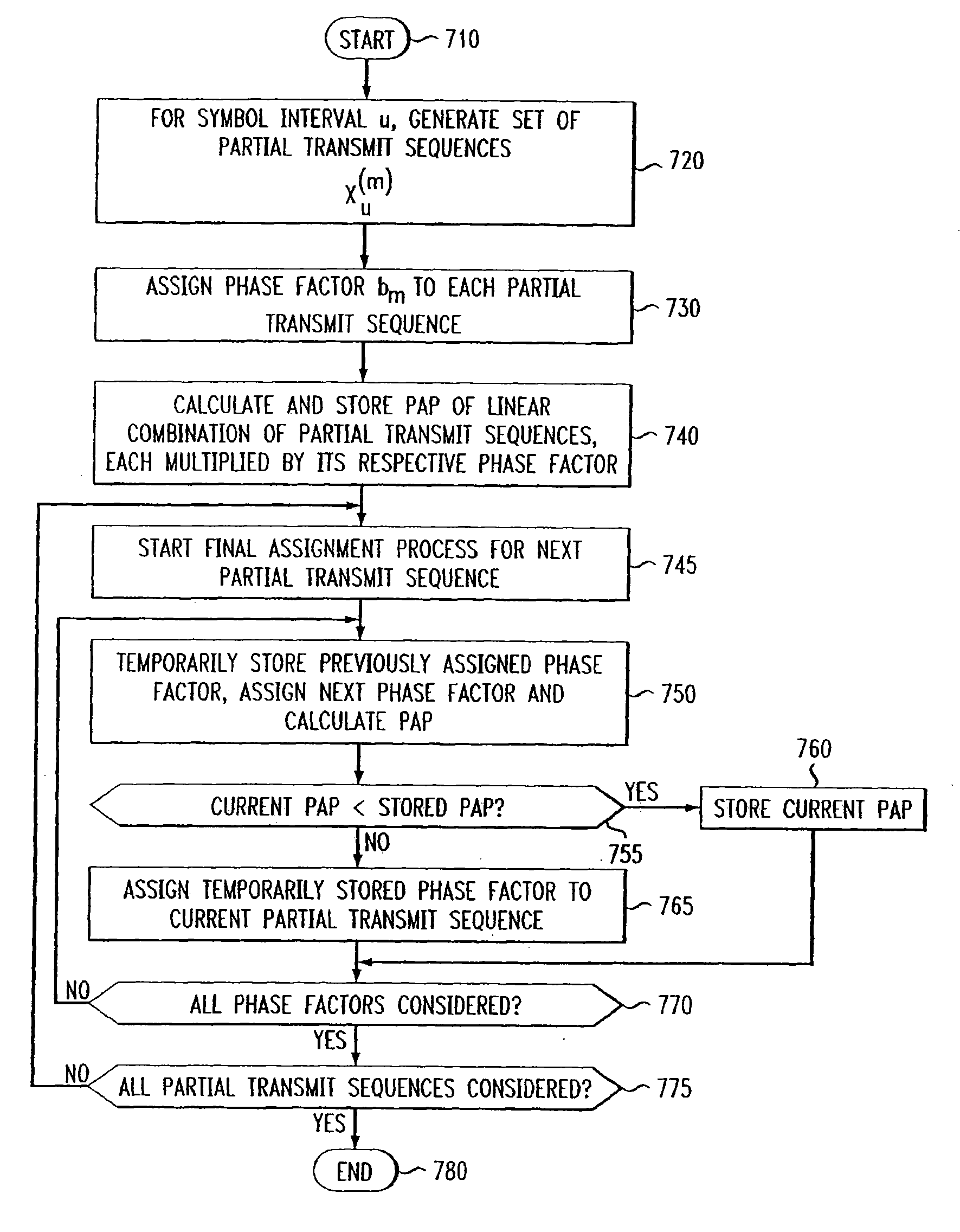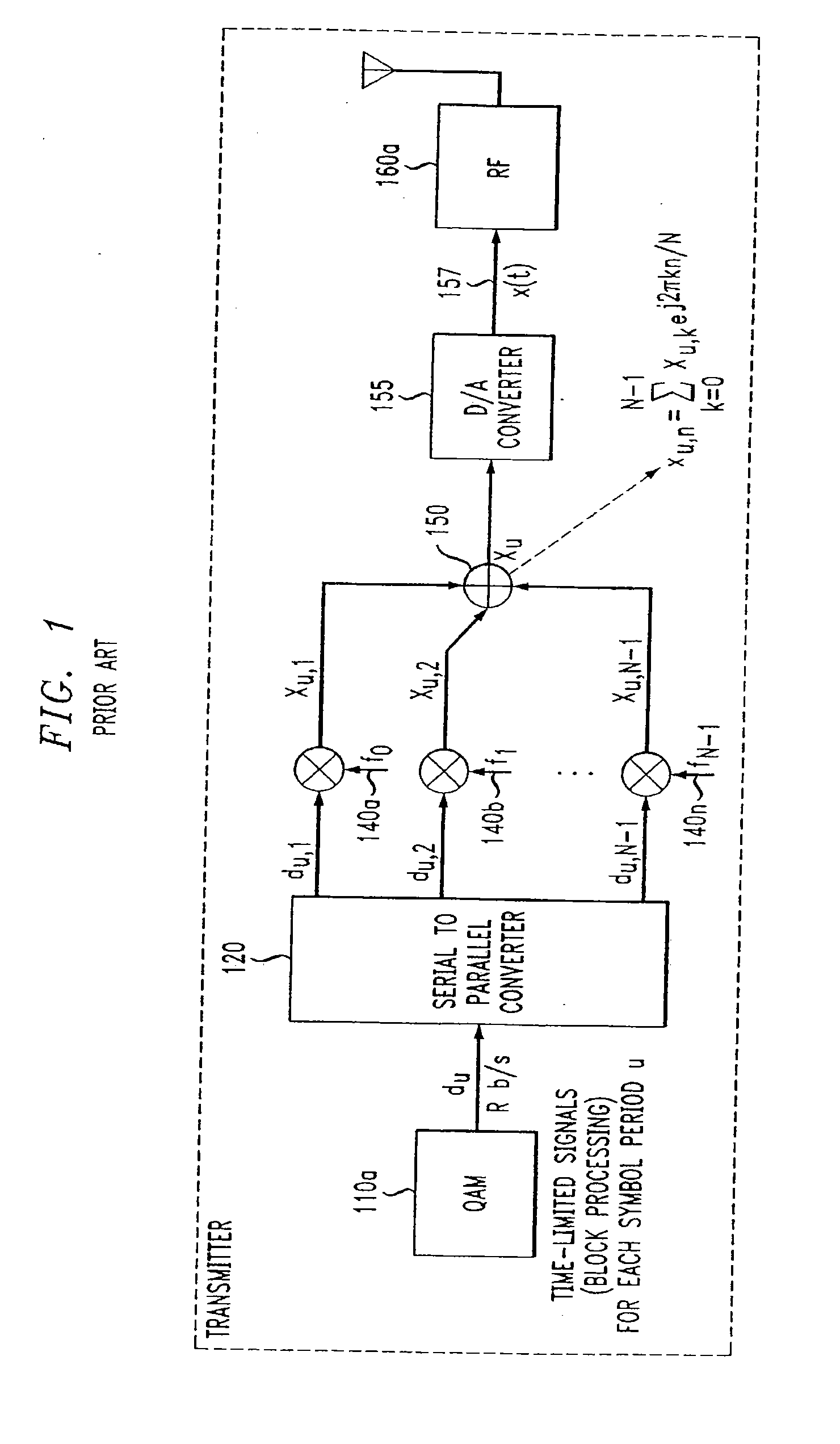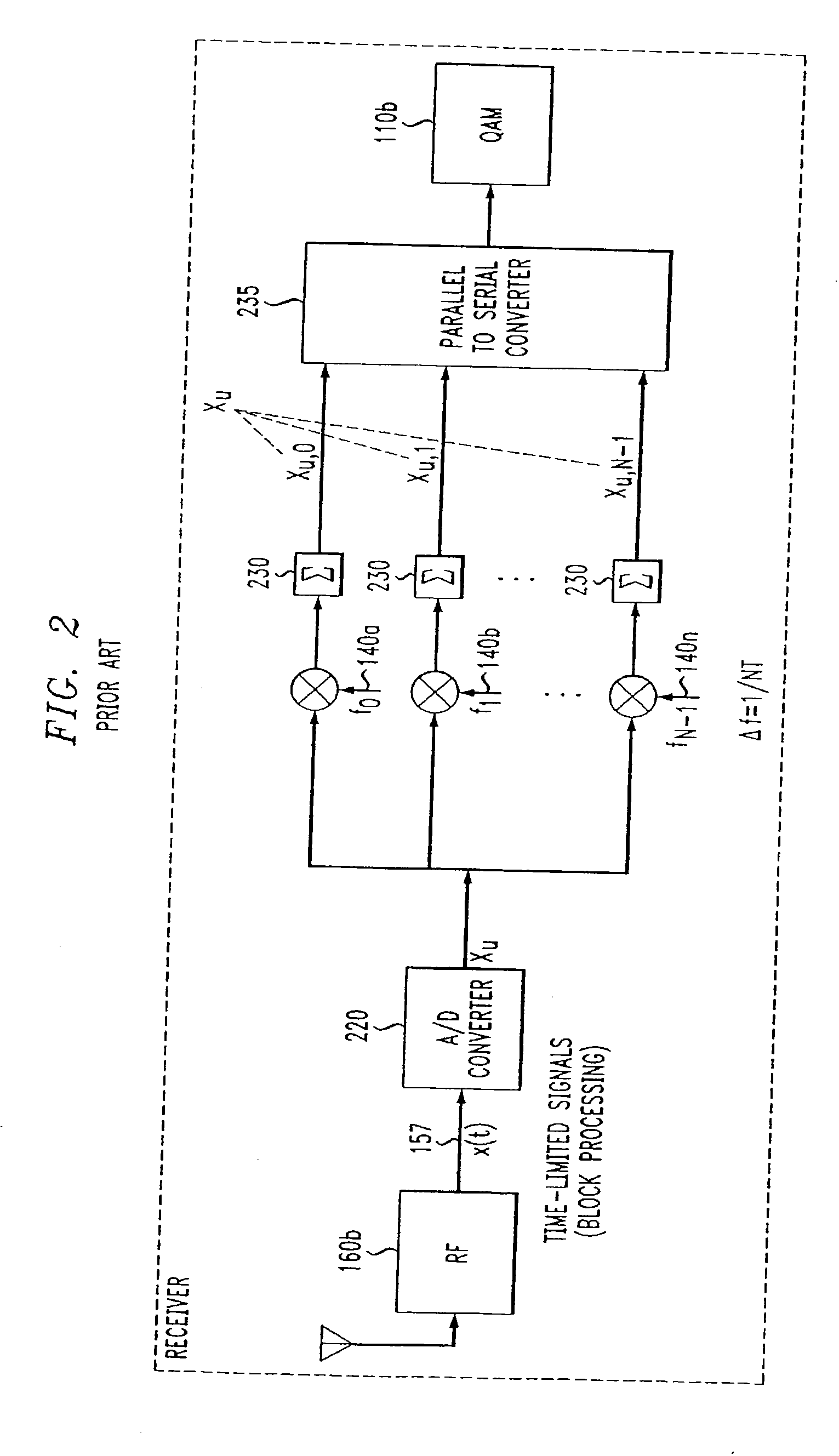Method and system for reduction of peak-to-average power ratio of transmission signals comprising overlapping waveforms
a transmission signal and power ratio technology, applied in the field of communication networks, can solve the problems of imposing an absolute limit on the bandwidth of a wireless channel, a large peak-to-average power ratio (pap) characteristic of a multi-carrier signal with a large number of subchannels, so as to reduce the pap of a signal, reduce the pap of an ofdm signal, and low complexity
- Summary
- Abstract
- Description
- Claims
- Application Information
AI Technical Summary
Benefits of technology
Problems solved by technology
Method used
Image
Examples
Embodiment Construction
[0029]The techniques for performing OFDM transmission are well known. In OFDM transmission, a block of N symbols {Xn, n=0, 1, . . . N-1} is formed with each symbol modulating one of a set of N subcarriers {fn, n=0, 1, . . . N-1}. The N subcarriers are chosen to be orthogonal, i.e., fn=n Δf, where the subcarrier spacing Δf=1 / NT and where T is the original data symbol period. The original signal after digital-to-analog conversion can be expressed as:
x(t)=∑n=0N-1Xn2πfn1,0≤t≤NT(1)
An important advantage of OFDM is that, in sampled form equation (1) can be implemented using an Inverse Fast Fourier Transform (IFFT).
[0030]FIG. 1, which is prior art, is a block diagram that depicts an implementation of OFDM at a wireless transmitter. A block of transmission data (corresponding to a particular symbol interval u) is digitally modulated in modulation block 110 using an appropriate modulation scheme such as quadrature amplitude modulation (QAM). A data vector output from modulation block 110a du...
PUM
 Login to View More
Login to View More Abstract
Description
Claims
Application Information
 Login to View More
Login to View More - R&D
- Intellectual Property
- Life Sciences
- Materials
- Tech Scout
- Unparalleled Data Quality
- Higher Quality Content
- 60% Fewer Hallucinations
Browse by: Latest US Patents, China's latest patents, Technical Efficacy Thesaurus, Application Domain, Technology Topic, Popular Technical Reports.
© 2025 PatSnap. All rights reserved.Legal|Privacy policy|Modern Slavery Act Transparency Statement|Sitemap|About US| Contact US: help@patsnap.com



